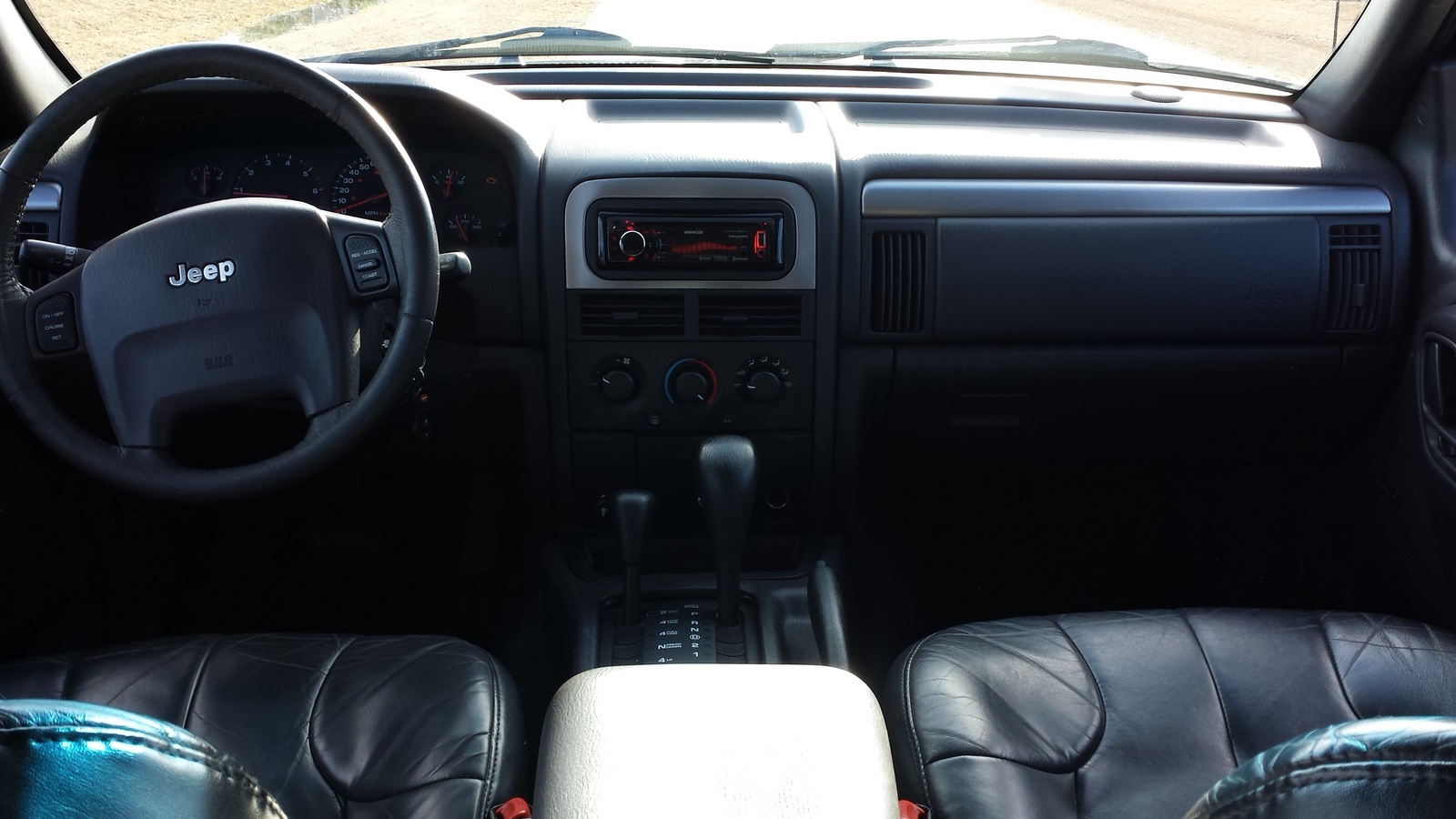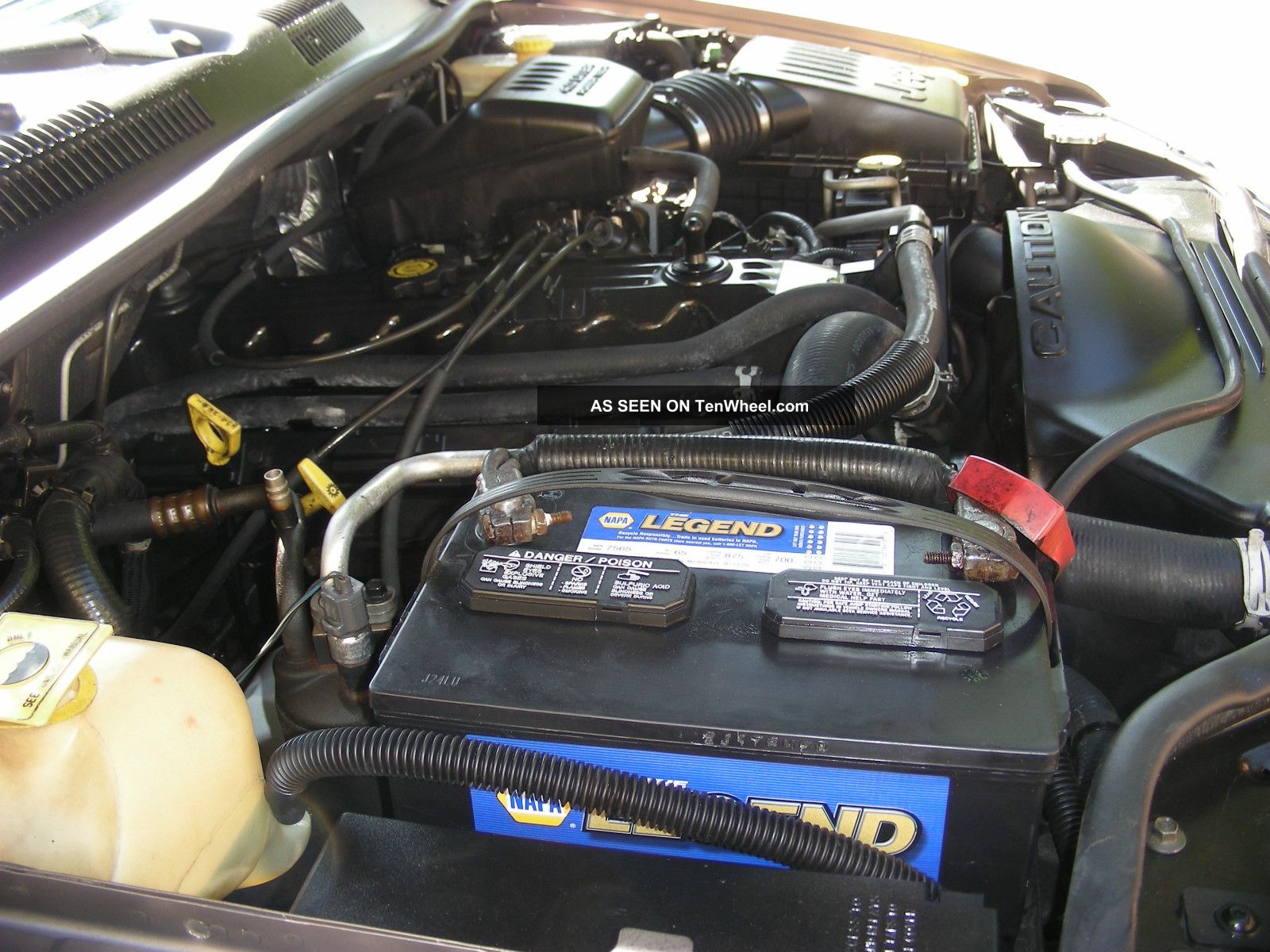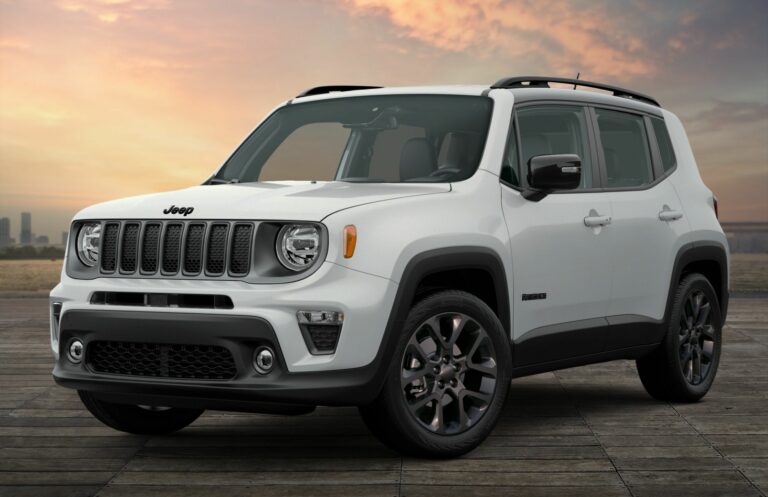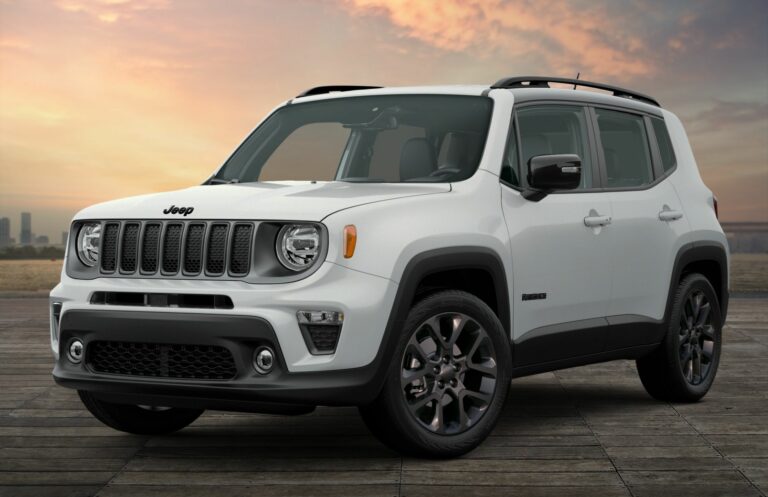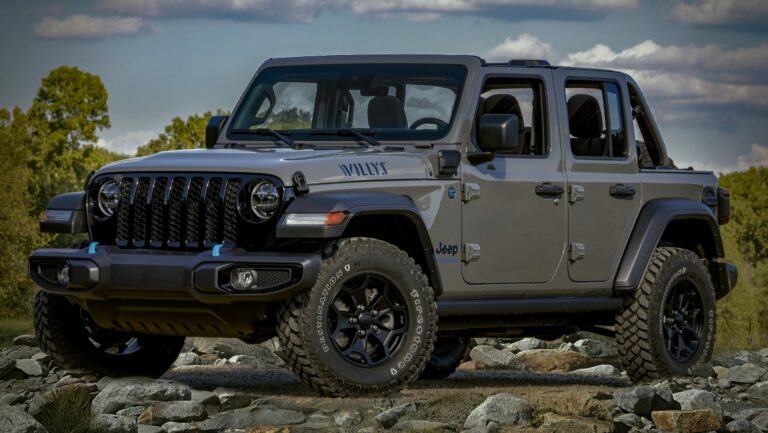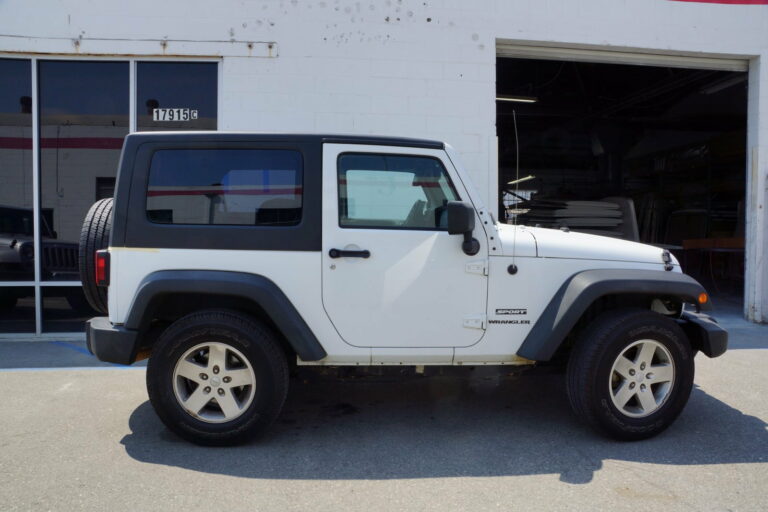The Enduring Appeal of the 2001 Jeep Grand Cherokee Laredo: A Comprehensive Guide
The Enduring Appeal of the 2001 Jeep Grand Cherokee Laredo: A Comprehensive Guide jeeps.truckstrend.com
The year 2001 marked a pivotal period for the Jeep Grand Cherokee, a vehicle that had already solidified its reputation as a formidable blend of rugged off-road capability and everyday comfort. Within the lineup, the 2001 Jeep Grand Cherokee Laredo stood out as the entry-level trim, yet it was anything but basic. It represented a sweet spot for many buyers: offering the core Grand Cherokee experience – its distinctive styling, robust powertrains, and legendary 4×4 systems – without the premium price tag of its Limited or Overland siblings. For two decades and counting, the 2001 Grand Cherokee Laredo has remained a popular choice in the used SUV market, cherished by enthusiasts for its durability, versatility, and surprising value. This comprehensive guide delves into everything you need to know about this iconic American SUV, from its specifications and driving dynamics to common issues and what to look for if you’re considering owning one today.
The Enduring Appeal of the 2001 Jeep Grand Cherokee Laredo: A Comprehensive Guide
The WJ Generation: Where the 2001 Laredo Fits In
The 2001 Grand Cherokee Laredo belongs to the "WJ" generation, which was produced from 1999 to 2004. This generation was a significant evolution from its ZJ predecessor, featuring a completely redesigned unibody chassis that offered improved rigidity, better crash protection, and a more refined ride. While maintaining the quintessential Jeep aesthetic, the WJ introduced smoother lines and a more aerodynamic profile. The Laredo trim, as the base model, typically came with cloth upholstery, a more modest sound system, and fewer creature comforts than the upscale Limited, but it still offered a surprisingly well-equipped package for its price point. Its enduring popularity stems from its fundamental soundness as an SUV, providing a compelling balance of utility, style, and off-road prowess.
Key Features and Specifications of the 2001 Grand Cherokee Laredo
Understanding the technical aspects of the 2001 Laredo is crucial for appreciating its capabilities and potential ownership experience.
Powertrain Options
The 2001 Laredo offered two primary engine choices, both renowned for their reliability and performance:
- 4.0-liter PowerTech Inline-Six (I6): This legendary engine, a staple of Jeep vehicles for decades, produced 195 horsepower and 230 lb-ft of torque. Known for its robust construction and strong low-end torque, it was a workhorse, perfectly suited for both daily driving and light off-roading. Paired with a 4-speed automatic transmission (42RE), it offered a dependable, if not lightning-fast, driving experience.
- 4.7-liter PowerTech V8: For those seeking more power, the optional 4.7L V8 delivered 235 horsepower and 295 lb-ft of torque (later updated to 265 hp in the ‘HO’ version for Limited/Overland, though not typically on the Laredo). Mated to a more advanced 5-speed automatic transmission (45RFE), this engine provided significantly stronger acceleration and improved towing capabilities. It offered a smoother, more refined feel than the I6.

Drivetrain Systems
Jeep’s reputation for 4×4 capability was well-maintained in the 2001 Laredo, offering several options:
- Two-Wheel Drive (2WD): Primarily for urban and highway driving, this rear-wheel-drive setup was the most fuel-efficient option.
- Quadra-Trac I: A full-time, single-speed four-wheel-drive system that required no driver input. It was ideal for slippery road conditions, automatically distributing power to the wheels with the most traction.
- Quadra-Trac II: A more advanced full-time system with a two-speed transfer case (high and low range), offering superior off-road capability. It could sense wheel slippage and redirect torque to the wheels with traction, making it highly effective on challenging terrain.
- Quadra-Drive (Optional/Rare on Laredo): While more commonly found on Limited and Overland trims, some Laredo models might have been optioned with Quadra-Drive, which added Vari-Lok axles (front and rear) to the Quadra-Trac II system, providing even greater traction control by mechanically locking differentials.

Suspension and Chassis
The 2001 WJ Laredo featured a coil-spring suspension at all four corners, providing a more comfortable ride than many of its competitors, while still maintaining excellent articulation for off-road use. The unibody construction, with integrated frame rails, contributed to its structural integrity and improved handling dynamics compared to traditional body-on-frame SUVs.
Exterior and Interior Design
The Laredo trim presented a clean, functional aesthetic. On the exterior, it typically featured unpainted black lower body cladding and bumpers, a distinctive seven-slot grille, and standard 16-inch alloy wheels. Inside, the Laredo offered durable cloth seating, manually adjustable seats (power driver’s seat was often optional), and a straightforward dashboard layout with intuitive controls. Standard features included air conditioning, power windows and locks, and an AM/FM cassette stereo. Options like a CD player, cruise control, and keyless entry were common additions.
Driving Experience and Performance
The 2001 Grand Cherokee Laredo offers a distinct driving character, balancing utility with a surprising degree of comfort.
On-Road Manners
Compared to its predecessors, the WJ Laredo provided a noticeably smoother and quieter ride. The coil-spring suspension absorbed road imperfections effectively, making it comfortable for daily commutes and long-distance travel. Steering was responsive for an SUV of its era, and body roll was reasonably controlled. While not a sports car, it handled predictably and confidently.
Off-Road Capability
This is where the Grand Cherokee truly shines, even in Laredo trim. With its robust 4×4 systems (especially Quadra-Trac II), generous ground clearance, and good approach/departure angles, the 2001 Laredo is remarkably capable off the beaten path. It can confidently tackle moderate trails, snow, and mud, making it a favorite among outdoor enthusiasts.
Fuel Economy
As expected for an SUV of its size and vintage, fuel economy is not a strong suit. Owners can typically expect:
- 4.0L I6: Around 15-17 MPG combined (14 city / 18-20 highway)
- 4.7L V8: Around 13-15 MPG combined (12 city / 16-18 highway)
These figures can vary significantly based on driving style, maintenance, and drivetrain choice.
Towing Capacity
The 2001 Laredo was a capable hauler:
- 4.0L I6: Up to 5,000 lbs (with proper equipment)
- 4.7L V8: Up to 6,500 lbs (with proper equipment)
This made it suitable for towing small boats, utility trailers, or light campers.
Reliability and Common Issues
While generally robust, the 2001 Grand Cherokee Laredo is not without its quirks and common issues, especially given its age. Awareness of these can help prospective buyers and current owners.
- Blend Door Actuators: A notorious problem, these plastic components behind the dashboard often break, leading to inconsistent or non-functional climate control (e.g., only hot air, or no air to certain vents). Repair is labor-intensive and costly.
- 4.7L V8 Engine Issues: While generally strong, the 4.7L can be prone to "ticking" lifters if oil changes are neglected or incorrect oil is used. Overheating can lead to warped cylinder heads, a very serious issue. Regular, high-quality oil changes are paramount.
- Transmission (42RE and 45RFE): Both transmissions are generally reliable but require regular fluid and filter changes. Neglect can lead to harsh shifts or eventual failure.
- Electrical Gremlins: Minor electrical issues, such as faulty window regulators, intermittent gauge cluster readings, or problems with the radio, can crop up due to aging wiring or connectors.
- Rust: Like many vehicles of its age, rust can be a concern, particularly in areas with road salt. Check frame rails, rocker panels, and around the rear hatch.
- Steering & Suspension Components: Wear and tear on ball joints, tie rods, control arm bushings, and steering box can lead to loose steering or clunking noises.
Maintenance Tips: Proactive maintenance is key to a long life for a 2001 Laredo. Regular oil changes, transmission fluid changes, coolant flushes, and inspecting suspension components will go a long way in preventing major issues. Addressing small problems early can save significant money down the line.
Buying and Owning a Used 2001 Laredo Today
For those considering a 2001 Jeep Grand Cherokee Laredo in the current market, it represents a compelling value proposition.
What to Look For During Inspection
- Service History: A well-documented service history is invaluable. Look for evidence of regular oil changes, transmission services, and coolant flushes.
- Fluid Leaks: Check under the vehicle for any signs of oil, coolant, or transmission fluid leaks.
- Engine Sounds: Listen for abnormal noises (ticking, knocking, whining). For the 4.7L, a persistent ticking can indicate valve train issues.
- Transmission Operation: Test all gears, including reverse and overdrive. Look for smooth shifts without hesitation or harshness.
- 4×4 System: If equipped, test the 4×4 system (high and low range) to ensure it engages smoothly.
- Climate Control: Verify that all climate control functions work correctly, including hot/cold air and all vent selections (check for the blend door issue).
- Rust: Thoroughly inspect the undercarriage, rocker panels, and wheel wells for significant rust.
- Tires and Brakes: Check tire condition and brake pad wear.
Availability of Parts
One of the significant advantages of owning a 2001 Laredo is the excellent availability of parts. Many components are shared across the WJ platform, and the aftermarket support is vast, making repairs and modifications relatively easy and affordable.
Cost of Ownership
Beyond the purchase price, consider:
- Fuel: As noted, fuel economy isn’t great.
- Maintenance: Regular maintenance is affordable, but unexpected repairs for common issues (like the blend door) can be costly if not DIY.
- Insurance: Generally reasonable for an older SUV.
The 2001 Laredo is ideal for budget-conscious buyers needing a capable, versatile SUV for daily driving, light hauling, and occasional off-road adventures. It’s also a popular platform for mild modifications.
Modifications and Upgrades
The aftermarket is rich with options for the WJ Grand Cherokee, including the Laredo trim. Common modifications include:
- Lift Kits: Ranging from mild 2-inch lifts for tire clearance and aesthetics to more aggressive setups for serious off-roading.
- Larger Tires: To improve off-road traction and give a more aggressive stance.
- Aftermarket Bumpers and Armor: For increased protection and utility on trails.
- Performance Upgrades: Cold air intakes, exhaust systems, and tuning can slightly improve performance, especially on the 4.7L V8.
Price Table: 2001 Jeep Grand Cherokee Laredo (Estimated Used Values)
Please note that these are estimated values and can vary significantly based on mileage, condition, engine, drivetrain, options, geographical location, and current market demand. This table provides a general range.
| Feature / Condition | Fair Condition (High Mileage, Minor Issues) | Good Condition (Average Mileage, Well-Maintained) | Excellent Condition (Low Mileage, Pristine) |
|---|---|---|---|
| Average Price Range | $1,500 – $3,000 | $3,000 – $5,500 | $5,500 – $8,000+ |
| Engine Type | 4.0L I6 / 4.7L V8 | 4.0L I6 / 4.7L V8 | 4.0L I6 / 4.7L V8 |
| Drivetrain | 2WD / Quadra-Trac I / Quadra-Trac II | 2WD / Quadra-Trac I / Quadra-Trac II | Quadra-Trac II (often preferred) |
| Typical Mileage | 180,000+ miles | 120,000 – 180,000 miles | Under 120,000 miles |
| Key Considerations | Needs TLC, potential for significant repairs | Ready to drive, may need routine maintenance soon | Ready to drive, minimal immediate concerns |
| Common Issues | Blend door, rust, worn suspension, fluid leaks | Minor electrical, early signs of wear | Minor cosmetic, age-related component wear |
| Ideal Buyer | DIY enthusiast, project car, very tight budget | Reliable daily driver, weekend adventurer | Collector, enthusiast, low-maintenance daily |
Note: Prices are for the Laredo trim only. Limited or Overland models typically command higher prices.
Frequently Asked Questions (FAQ) about the 2001 Jeep Grand Cherokee Laredo
Q1: Is the 2001 Jeep Grand Cherokee Laredo reliable?
A1: Yes, generally. While specific issues like the blend door actuators and potential 4.7L engine quirks exist, the 2001 Laredo is known for its robust construction, especially the 4.0L I6 engine. Regular maintenance is crucial for long-term reliability.
Q2: Which engine is better, the 4.0L I6 or the 4.7L V8?
A2: It depends on your priorities. The 4.0L I6 is legendary for its bulletproof reliability and strong low-end torque, making it a solid choice for daily driving and light off-roading. The 4.7L V8 offers significantly more power and refinement, better for towing and spirited driving, but requires diligent maintenance to avoid potential issues.
Q3: What kind of fuel economy can I expect?
A3: Expect around 15-17 MPG combined for the 4.0L I6 and 13-15 MPG combined for the 4.7L V8. These are older, heavier SUVs, so fuel efficiency is not their strong suit.
Q4: Can the 2001 Laredo really go off-road?
A4: Absolutely. Even in Laredo trim, with the right 4×4 system (especially Quadra-Trac II or Quadra-Drive), the 2001 Grand Cherokee is highly capable off-road. Its solid axle suspension and robust drivetrain make it excellent for trails, snow, and mud.
Q5: What’s the biggest common problem to watch out for?
A5: The blend door actuator failure in the HVAC system is perhaps the most common and frustrating issue, as it’s expensive to repair due to the labor involved in accessing it. Always check that the climate control works perfectly, delivering hot and cold air to all vents.
Q6: Are parts readily available for the 2001 Laredo?
A6: Yes, parts availability is excellent. Given the popularity and production volume of the WJ generation, both OEM and aftermarket parts are widely available and generally affordable.
Q7: Is it a good family car?
A7: For its time, yes. It offers decent interior space for four adults, a good cargo area, and a comfortable ride. However, it lacks modern safety features (like side airbags or advanced driver-assistance systems) and child seat anchors compared to contemporary SUVs.
Conclusion
The 2001 Jeep Grand Cherokee Laredo stands as a testament to a golden era of SUVs – a time when utility, capability, and a rugged spirit were paramount. While it may lack the sophisticated electronics and refined interiors of modern vehicles, its honest approach to SUV design, combined with its legendary Jeep DNA, continues to attract a loyal following. For those seeking an affordable, capable, and versatile vehicle that can handle both the daily grind and weekend adventures, the 2001 Grand Cherokee Laredo remains a compelling choice. With proper maintenance and an understanding of its few common quirks, this iconic Jeep can still provide years of dependable service, embodying the freedom and capability that the Grand Cherokee nameplate has always promised.
